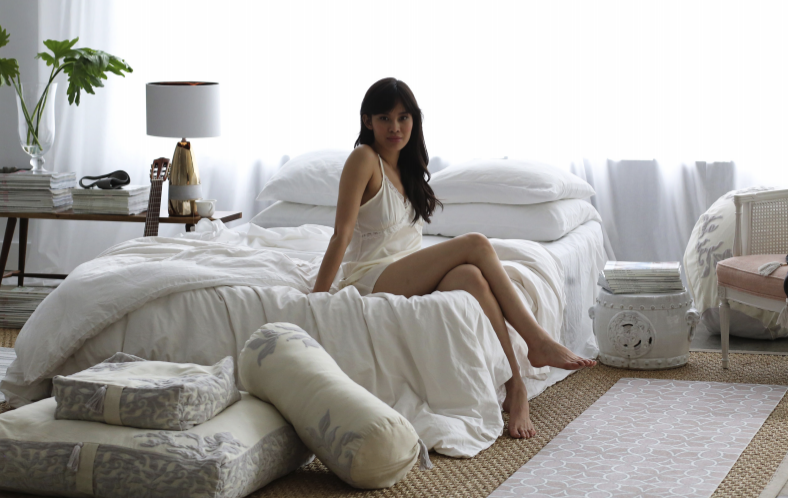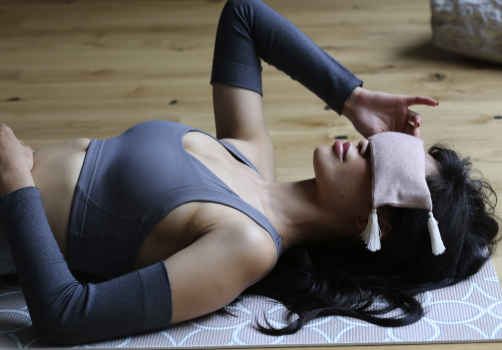Yogamere - Creating a Wellness Sanctuary at Home
- Elevated Magazines

- Mar 24, 2021
- 5 min read
What happens when an Interior Designer of luxury homes from Nantucket to Charleston to Palm Beach is challenged with creating a home yoga studio for a client and finds that most of the equipment on the market is designed mostly for commercial spaces – which is to say unattractive and out of sync with home design trends.
If you are Amy Ormond, an avid runner and dedicated yogi as well as a designer, you create an entirely new collection of wellness accessories called Yogamere™ to fill the design gap between wellness and home. With the central belief that wellness at home can and should be beautiful, Ormond has elevated the aesthetic of traditional fitness accessories and raised the bar on what a home wellness sanctuary can be.
Yogamere launched in early 2020 – just at the moment that the entire world had to come to terms with the notion of staying home in order to stay well. With gyms, spas and yoga studios shuttered, our homes became central to how we take care of ourselves physically and spiritually. With that reality forced upon us, many design and fitness enthusiasts have begun to take a closer look at what they bring home to practice yoga, meditate, relax or work out.
Ormond began thinking this way several years earlier while sourcing for a client’s home yoga studio. Her frustrating search to find items that were as beautiful as the rest of the house prompted Ormond to take a look at what she had in her own home for wellness. A garish green yoga mat, red hand weights, bright blue foam roller, and a rainbow of resistance bands were all stashed away in closets or under the bed. She quickly realized most of the things she had at home to work out didn’t measure up to the look of her home and certainly didn’t pass the test of being beautiful or inspiring.
“The assortment of fitness accessories I had at home was mostly hidden away – and therefore rarely used – because the colors and materials were not in keeping with the rest of my home. Somehow I had accepted that this was the way it had to be. But in thinking that way, I had put an unnecessary barrier between myself and my practice.”
This was a powerful catalyst for Ormond to begin to re-think wellness at home. Fitness accessories that are beautifully designed are more likely to be left out in the open, more likely to be used everyday and more likely to encourage a more consistent practice and a stronger commitment to taking care of ourselves.
“I was convinced I couldn’t be the only one who wanted everything at home to be thoughtfully designed and curated – including fitness accessories. It seemed to me that especially when it comes to the things I bring home to stay healthy, why settle for anything less than beautiful?”
Traveling to India and Nepal to source materials and manufacturers, she visited yoga retreats, wellness destinations, spas and resorts to gather ideas for what would become Yogamere. During a stay at an exquisite yoga sanctuary outside Kathmandu, she found the inspiration she was seeking in the simplicity of the room design, the soft color palette and the purity of materials used throughout the property. Throughout the carefully curated space, there was an emphasis on naturally simple materials that were textural and luxurious without being overdone.
“I left there wanting to recreate that feeling at home everyday in my own wellness sanctuary.”
Before leaving, Ormond created a list of what the essential elements are in a wellness sanctuary and how to create that at home:
1. In Sight, In Mind: The most essential part of creating a sanctuary at home is to have your space visible, accessible and inviting. Whatever you choose to be a part of your Zen space, it should be always available, never requiring any work or effort to set up or put away. When it blends with your home décor, it will call you to your practice … and you will practice everyday.
2. Texture and Color: Choose materials and colors that are pleasing to you and that meld with your home environment. Whether it be a yoga mat, hand weights, bolster or savasana blanket, don’t compromise on the expectation that they be just as beautiful as the other items you’ve carefully selected for your home. Layer colors and textures that draw you to the space and insist on materials that have a pleasing touch and feel. The space for your wellness practice should be special – worthy of being left out for all to see and, most importantly, for you to enjoy.
3. Sight and Light: Natural light changes and lifts your mood so whenever possible, create your sanctuary near a window or door that allows natural light to stream in. Take advantage of any view to nature by positioning your Zen space towards the vista. Turn off artificial light and flow by candlelight when you can and position mirrors to reflect sunlight towards your Zen space.
Yogamere is now a collection of yoga mats, meditation cushions, bolsters and cashmere & silk knitted eye pillows in colors and materials that blend effortlessly into the home.
Ormond approached the creation of the Yogamere collection from the same perspective as designing a home. Starting with a soft color palette that was both soothing and inviting, she played with textures sourced from around the world and eventually came to a combination of cotton, velvet, cashmere and silk for the collection. The philosophy of the company comes through the soft, welcoming material and careful details.
When creating the artwork for the yoga mats, Ormond envisioned an area rug that could be left next to the bed to entice you to stretch the minute your feet touch down in the morning. The meditation cushions and bolsters are covered in durable natural cotton with textured velvet applique and filled with organic buckwheat hulls – making them both a lovely addition to a living space and incredibly comfortable to use.
As the prototypes came in, Ormond not only tested them for function but also required them to pass what she calls the “Living Room Test”.
“I brought each Yogamere prototype home and placed them prominently in my living room, bedroom and even my kitchen. I lived with them everyday to see if they felt like part of the décor. If they blended nicely within the space and drew me to them to practice yoga, meditation, or stretching or sit-ups, then they passed the test of whether or not they were worthy of my Living Room. Only then did they make it into the collection.”










